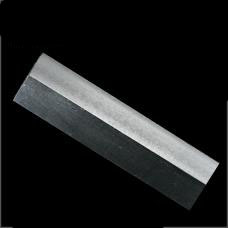Rhenium brand

General characteristics
Rhenium — refractory metal that looks like steel. Physical properties similar to refractory elements of the sixth group (molybdenum, tungsten) and platinum group elements. Metal powder is dark gray or black color, depending on particle size. The melting point Re only inferior to tungsten, strength takes the 4th place after osmium, platinum and iridium. Net Re at room temperature plastic. However, due to the high modulus of elasticity, its hardness after treatment seriously increases due to work hardening. To restore ductility, the metal is annealed in hydrogen, inert gas or vacuum. Re able to withstand thermal shock without loss of strength. At t° up to 1200 °C strength exceeds the level of tungsten and much greater strength of molybdenum. Specific electrical resistance Re exceeds the performance of tungsten and molybdenum.
| Physical properties Re | |
|---|---|
| Atomic (molar) mass, g/mol | 186,2 |
| Oxidation | 7, 6, 5, 4, 3, 2, -1 |
| Density [g/cm3] | 21,02 |
| The melting temperature t°C | 3186°C |
| The heat of fusion kJ/mol | 34 |
| The thermal conductivity K [W/(m·K)] | 48 |
| Heat of evaporation kJ/mol | 704 |
Production
Rhenium is extracted from raw materials with very low percentages of copper sulfide and molybdenum ores. The raw material is processed by pyrometallurgical methods (melting, conversion, oxidizing roasting). Re at high temperatures, sublimated in the form of oxides, which are trapped in gas and dust removal systems. When roasting molybdenum concentrates and partial sublimation, part of it is retained in the calcine from which to extract ammonia, soda solutions in the leaching. In this case, the source of the metal serve as the sulfuric acid solutions wet-type dust removal systems or at the end of hydrometallurgical processing Ogarkov — the mother liquors. During the smelting of copper concentrates with gases, as a rule, is carried around 56−60% Re. Novosormovskaya metal all goes into the matte, and after converting the matte is removed from the gases. If furnace and Converter gases is used to produce sulfuric acid, Re is extracted in the form of rhenium acid by washing an electric recirculating filters. Rinsing acid during processing copper concentrates is the main source of this metal.
Use
Is no alternative structural material for the manufacture of parts of special equipment, which is designed to work at t° above 1000 °C in corrosive environments. In electrical engineering, electronics from rhenium alloys produced the grid, the filament heaters of the cathodes for cathode ray tubes; thermionic generators, the generator and the receiving-intensifying lamps — filament ion gauges and mass spectrometers. Of survey instruments important stable operation of the mechanical and optical nodes that are fixed to the metal thin wires. Suspensions of this type contain theodolites, levels, gyrotheodolite. The most accurate suspensions are those which are made of rhenium alloys.
For measuring the high temperatures (about 2500°C) used thermocouple alloys of tungsten and rhenium. They are much more conventional thermocouples of molybdenum and tungsten. Termoelektrodnye wire is manufactured by powder metallurgy from an alloy of BP-20 (Re — 20%), BAP-5 (with silica-and aluminum additives and Re — 5%), and BP-5 (rhenium — 5%). Thermocouple wire brands ВР5 and ВР20 has different nominal values of thermo-EMF, which are reflected in the calibration. Tungsten-rhenium thermocouple protected molybdenum and ceramic covers. Thermoelectrodes brand BAP-5 (BP-5) is completed only with the electrode and the thermoelectrodes brand BP-20, which have the same statistical characteristics.
The inside of the bulbs over time the glass forms a dark patina that is the end result of the water cycle. With the most careful removal of the lamps of the air and some water vapor always remains. The water dissociates at high temperature into oxygen and hydrogen; oxidizing the hot tungsten filament. After that, the oxide of tungsten is vaporized, deposited on glass, metal tungsten, which is restored by hydrogen. Thus, the smallest particles of tungsten evaporate from the filament on the glass to form a dark spot, and the filament becomes thinner until it breaks. At a temperature of 1300 °C Re double stable to the water cycle than tungsten, and at a temperature of 1750 °C eight times. The alloys of rhenium with tungsten — perfect for the production of the filament.
Buy at best price
In stock LLC «AVEK global» — the widest range of metal from nonferrous and ferrous metals at the best prices. Our experts are always ready to help in the selection of necessary materials, upon request, will provide all the necessary information about the product, cost and delivery time. Rates depend on scope of delivery and additional conditions. For wholesale orders discounts. Buying products of the company «AVEK global», You will find a worthy partner.


